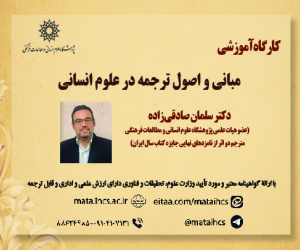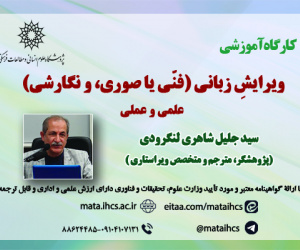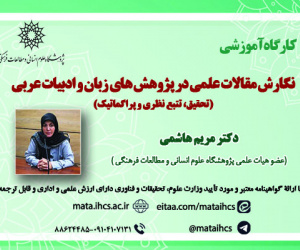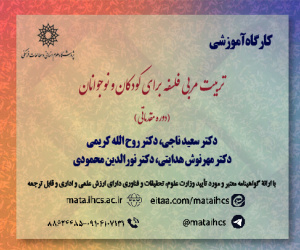ارزیابی سرمایه های معیشتی سکونتگاه های روستایی (1399-1375)؛ نمونه موردی: ناحیه تکاب (آذربایجان غربی) (مقاله علمی وزارت علوم)
درجه علمی: نشریه علمی (وزارت علوم)
آرشیو
چکیده
از مهم ترین و تأثیرگذارترین بسترهای پیشبرد اهداف توسعه در نواحی روستایی، شناخت وضعیت معیشت خانوارها، میزان دسترسی آن ها به سرمایه های مختلف معیشتی و عوامل جغرافیایی مؤثر بر معیشت است ؛ با این نگاه و در جهت ارزیابی نقش سرمایه های مختلف معیشتی در پایداری یک ناحیه روستایی، پژوهش حاضر به بررسی نقش سرمایه های معیشتی در سکونتگاه های روستایی ناحیه تکاب پرداخته است. روش شناسی انجام تحقیق بر اساس روش تحقیق آمیخته و از نوع طرح تحقیق آمیخته اکتشافی صورت پذیرفته است. بر اساس مطالعه انجام شده، سرمایه ها در قالب 3 بخش اصلی سرمایه های محیطی (معادن، ظرفیت های گردشگری، محصولات زراعی و باغی، فرآورده های دامی (لبنی)، مراتع، محصولات زنبورداری)، سرمایه های انسانی (سطح تحصیلات، تمایل خانواده ها به تحصیل فرزندان و قالی بافی) و سرمایه های اجتماعی (مشارکت و همدلی مردم، امنیت اجتماعی، تنوع قومیتی و زندگی مسالمت آمیز) دسته بندی شدند. نتایج پژوهش گویای آن است که ناحیه مورد مطالعه از نظر سرمایه های محیطی، انسانی و اجتماعی شرایط مطلوبی دارد و مسئله اساسی در این بین به نحوه استفاده از این سرمایه ها برمی گردد. معادن به عنوان یک سرمایه محیطی نه تنها به معیشت روستائیان کمک چندانی نکرده بلکه باعث تخریب محیط زیست پیرامونی، تغییر کاربری ها و تخریب زیرساخت ها (راه های ارتباطی) شده است. بر اساس یافته ها علت چنین پیامدهایی بیشتر به مشارکت ندادن مردم در بهره گیری از توان های محیطی بر می گردد. سرمایه های فیزیکی و مالی شرایط مناسبی را در ناحیه مورد مطالعه نداشته اند که علت اصلی آن دوری تکاب از شهرهای بزرگ و میانی منطقه و نیز شرایط خاص جغرافیایی و کوهستانی بودن منطقه برمی گردد. کلمات کلیدی: معیشت پایدار، سرمایه معیشتی، سکونتگاه های روستایی، شهرستان تکاب.Measuring livelihood capital of rural settlements (1996-2020) Case: Takab region (West Azerbaijan)
One of the most important and effective contexts for advancing development goals in rural areas is recognizing the living conditions of households, their access to various livelihoods, and geographical factors affecting livelihoods; With this view and to evaluate the role of various livelihood assets in the sustainability of a rural area, the present study has investigated the role of livelihood capital in rural settlements in Takab area. This research is based on the mixed research method of exploratory mixed research design. According to the study, capital in the form of 3 main sections of environmental capital (mines, tourism capacity, crops, and horticultural products, livestock products (dairy), pastures, beekeeping products), human capital (level of education, desire of families to study Children and carpet weaving) and social capital (public participation and empathy, social security, ethnic diversity, and peaceful living) were categorized. The results of the research show that the study area has favorable conditions in terms of environmental, human, and social capital, and the main issue in this regard is how to use these resources. Mines as an environmental asset have not only not contributed much to the livelihood of the villagers, but have also destroyed the surrounding environment, changed land use, and destroyed infrastructure (roads). According to the findings, the reason for such consequences is mostly due to the non-participation of people in the use of environmental potential. Physical and financial capital did not have suitable conditions in the study area, the main reason for which is the distance of Takab from large and medium cities in the region, as well as the special geographical and mountainous conditions of the region. Keywords: Sustainable Livelihood, livelihood capital, rural settlements, Takab County.



